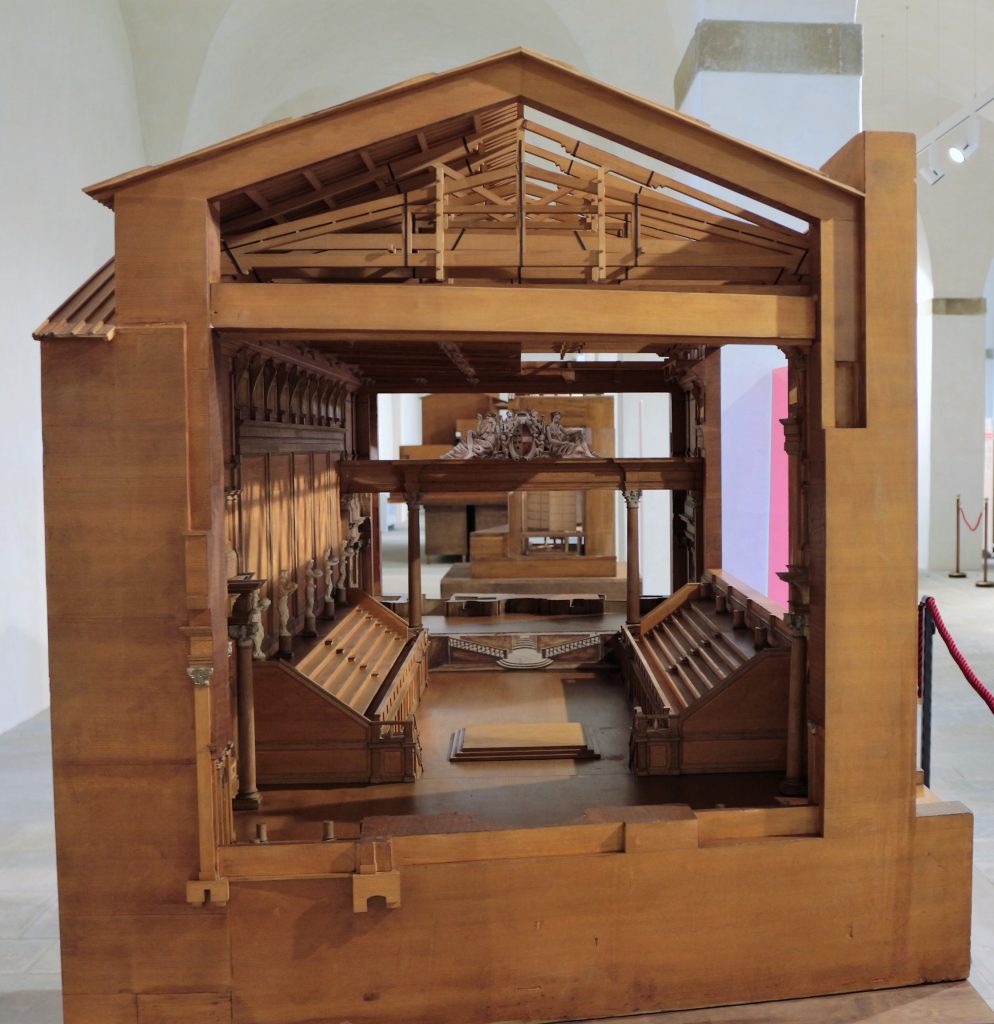- Home
- /
- Parco Mediceo di Pratolino
- /
- The Medici theatrical mechanisms...
- /
- The Medici theatrical mechanisms-...

Salone dei Cinquecento in Palazzo della Signoria: The ‘Throne Room’
Interpretive model of the theatrical apparatus created by Giorgio Vasari in 1565 in the Salone dei Cinquecento in Palazzo Vecchio
Project by Ludovico Zorzi and Cesare Lisi, model built by Cesare Lisi – 1975.
Scale 1:25
The model reproduces the aspect of the Salone dei Cinquecento, in its essential lines, as it appeared with the apparatus designed by Vasari for theatrical representations. The stage, with the periaktoi devices for scene changes and the tiers for women spectators, was set up on the south side; men were positioned on benches at the centre of the hall in front of the stage/tribune of the court. The tiers were built of a wooden structure, so highly technically developed as to resemble modern prefabricated elements that could be assembled or removed within eight hours’ time.
The silvered statues that adorned the peak of the tribune were as many as the hours of the performance. Each one held a crystal sphere containing coloured water that reflected the rays of a torch behind it. The intensity of the light, appropriately diversified (weaker at the back of the hall and more intense toward the proscenium) set off the scene. This was surrounded by a cornice in the form of a scenic arch – consisting of an architrave surmounted by an important pinnacle with the Medici arms – and by two lateral columns, which together with the curtain painted by Zuccari, separated the place of action from the place of the audience, like a diaphragm. This was the first example in history of the theatre of the presence of fixed framing of the scene, the proscenium.



